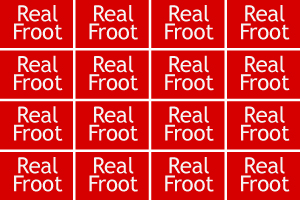To veg or not to veg? Is it healthier and more “green” to be a vegetarian, or a meat eater? Good question. Most of us would probably say vegetarian. And we’d be right, IF we ate REAL food. Real vegetables, fruit, real beans, tofu, rice, lentils, nuts, seeds, maybe eggs and dairy… Real food always trumps Foodiness, vegetarian or not. But the long, freaky finger of Foodiness has found its way into the world of vegan and vegetarian foods, too. Like Chick’n nuggets, and veggie burger patties. Some have almost 30 ingredients (!) , which have to be grown, picked, processed, packaged, shipped to a factory and then opened, processed again, re-packaged, re-shipped and refrigerated. Doesn’t sound very green to me. How ‘bout just raising an animal, butchering it, shipping it to a market, and selling it to me, the meat eater? I see a tiny hoof-shaped carbon footprint inside that gigantic tofu hotdog shaped one…
Take a look:
Sample ingredients in some fake meat products (the number of ingredients is the important thing, not necessarily the ingredients themselves)
Lightlife Chick’n strips
Water, textured soy protein concentrate, natural flavors (from vegetable sources), less than 2% of: salt, barley malt extract, yeast extract, tapioca starch, onion powder, dextrose, garlic powder, annatto (color), paprika, potassium chloride, chicory fiber (inulin), natural smoke flavor. (15 ingredients)
Quorn burgers
mycoprotein (38%), partially rehydrated egg white, textured wheat protein (wheat protein, wheat starch), onion, sunflower oil, whey protein concentrate. Contains 2% or less of rusk (wheat flour, ammonium bicarbonate), palm oil, natural flavoring from non meat sources, salt, sugar, tapioca starch, sodium alginate, smoked paprika, pectin, potato maltodextrin, barley malt extract, smoked yeast, potassium chloride, smoke flavoring, citric acid, gum arabic, silicon dioxide, tricalcium phosphate. (25 ingredients)
Tofurky slices
Water, vital wheat gluten, organic tofu (water, organic soybeans, magnesium chloride, calcium chloride), non-genetically engineered expeller-pressed canola oil, natural vegetarian flavors, shoyu soy sauce (water, non-genetically engineered soybeans, wheat, salt, culture), non-genetically engineered corn starch, white bean flour, garbanzo bean flour, lemon juice from concentrate, calcium lactate from beets. (17 ingredients)
Ingredients in chicken: Chicken.
Of course you can be a vegetarian and be righteous when it comes to the environment. But it means you’re going to have to find, prepare and eat real non-meat food like vegetables and fruit and beans. Otherwise you might as well go and eat a hamburger.

 What they aren’t telling you is what actually goes into fruit and cereal bars. One new “superfruit fusion” breakfast bar claiming to deliver the nutritional “pow” of pomegranates is actually made from mostly invert sugar, corn syrup, water, glycerin, sugar, and modified corn starch, with only a nod to pomegranates in the form of juice concentrate, which is really just the sugar from the fruit. Typical “fruit” bars like this one contain 13 grams of sugar. …that’s one gram less than a Milky Way bar.
What they aren’t telling you is what actually goes into fruit and cereal bars. One new “superfruit fusion” breakfast bar claiming to deliver the nutritional “pow” of pomegranates is actually made from mostly invert sugar, corn syrup, water, glycerin, sugar, and modified corn starch, with only a nod to pomegranates in the form of juice concentrate, which is really just the sugar from the fruit. Typical “fruit” bars like this one contain 13 grams of sugar. …that’s one gram less than a Milky Way bar.